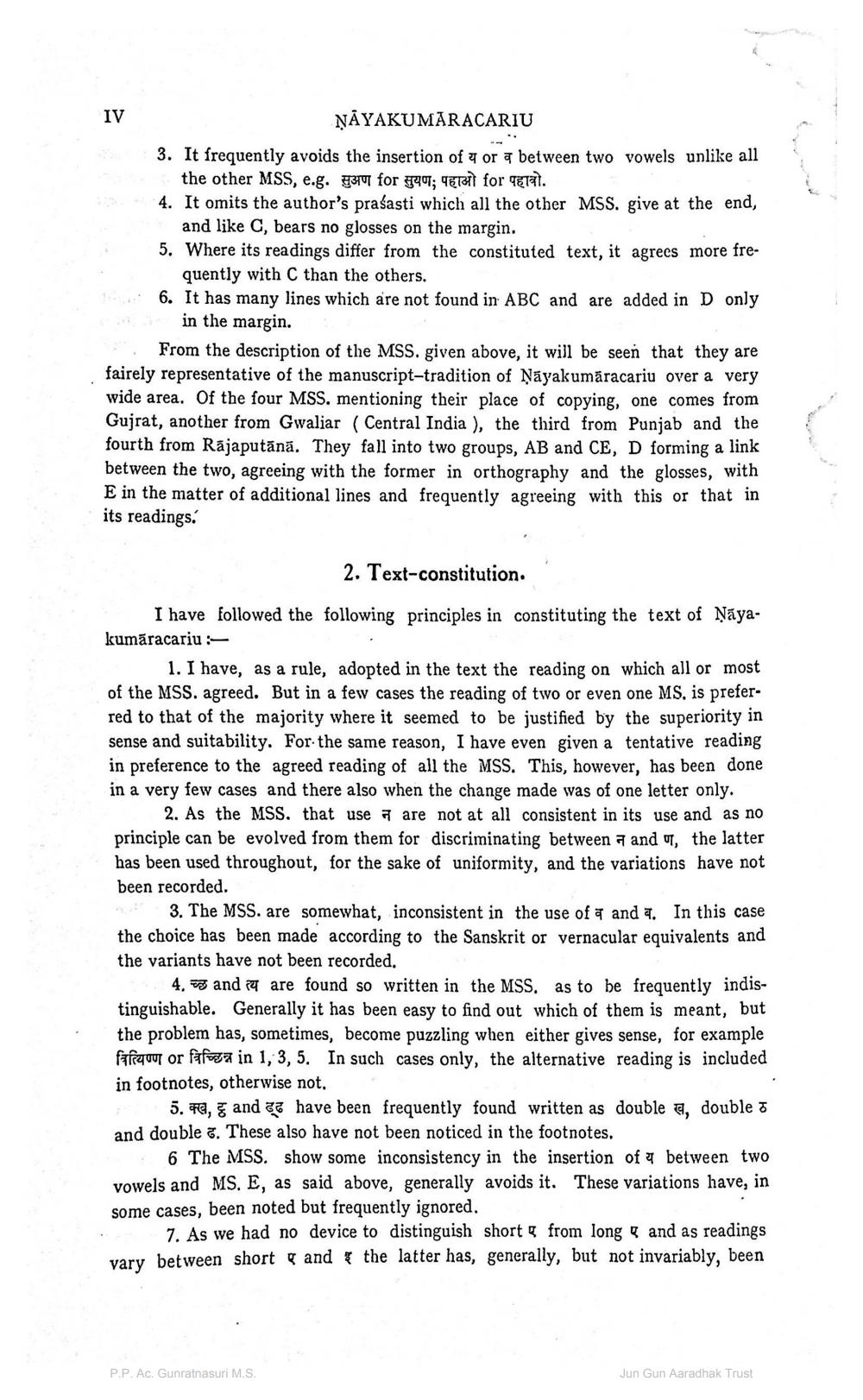________________ IV NAYAKUMARACARIU 3. It frequently avoids the insertion of 4 or a between two vowels unlike all the other MSS, e.g. 319 for 777; Erzit for vetat. 4. It omits the author's prasasti which all the other MSS. give at the end, and like C, bears no glosses on the margin. 5. Where its readings differ from the constituted text, it agrecs more fre quently with C than the others. 6. It has many lines which are not found in ABC and are added in D only in the margin. From the description of the MSS. given above, it will be seen that they are fairely representative of the manuscript-tradition of Nayakumaracariu over a very wide area. Of the four MSS. mentioning their place of copying, one comes from Gujrat, another from Gwaliar (Central India ), the third from Punjab and the fourth from Rajaputana. They fall into two groups, AB and CE, D forming a link between the two, agreeing with the former in orthography and the glosses, with E in the matter of additional lines and frequently agreeing with this or that in its readings: 2. Text-constitution. I have followed the following principles in constituting the text of Nayakumaracariu 1. I have, as a rule, adopted in the text the reading on which all or most of the MSS. agreed. But in a few cases the reading of two or even one MS. is preferred to that of the majority where it seemed to be justified by the superiority in sense and suitability. For the same reason, I have even given a tentative reading in preference to the agreed reading of all the MSS. This, however, has been done in a very few cases and there also when the change made was of one letter only. 2. As the MSS. that use 7 are not at all consistent in its use and as no principle can be evolved from them for discriminating between 9 and u, the latter has been used throughout, for the sake of uniformity, and the variations have not been recorded 5 3. The MSS. are somewhat, inconsistent in the use of a and a. In this case the choice has been made according to the Sanskrit or vernacular equivalents and the variants have not been recorded. 4. ~ and ca are found so written in the MSS. as to be frequently indistinguishable. Generally it has been easy to find out which of them is meant, but the problem has, sometimes, become puzzling when either gives sense, for example frequut or fara in 1, 3, 5. In such cases only, the alternative reading is included in footnotes, otherwise not. 5. Fe, and a have been frequently found written as double a, double and double 7. These also have not been noticed in the footnotes. 6 The MSS. show some inconsistency in the insertion of u between two vowels and MS. E, as said above, generally avoids it. These variations have, in some cases, been noted but frequently ignored. 7. As we had no device to distinguish short from long and as readings vary between short & and the latter has, generally, but not invariably, been P.P.AC. Gunratnasuri M.S. Jun Gun Aaradhak Trust




